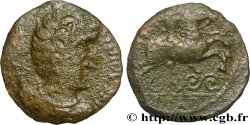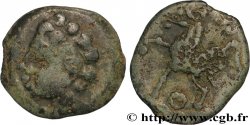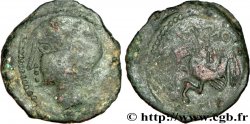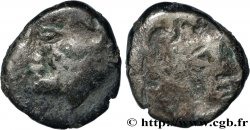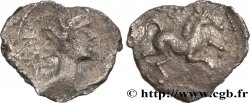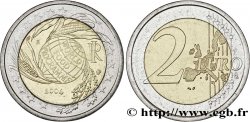Live auction - bga_344774 - GALLIA - ARVERNI (Area of Clermont-Ferrand) Statère d’or au nom de VERCINGETORIXS, type Id
得先注册又得到批准才可以报价。为了报价注册. 客户应该得到公司允许,那种过程需要 48 个小时。别等出售结束那一天才登记。您报价的话等于您赞成买那物品,而且按« 保价 » 证明您接受 cgb.fr 因特网拍卖使用法.
报价时只可以出全数值欧元总额。物品描述也说明销售结束时间,结束后出价都不会生效。 报价命令转达有时变动,等到最后秒钟增加否决的可能会。想多了解的话请注意 因特网拍卖常问
最高出价方将支付18%的不含税的拍卖费用
最高出价方将支付18%的不含税的拍卖费用
| 估算 : | 50 000 € |
| 价格 : | 52 000 € |
| 最高出价 : | 52 000 € |
| 拍卖结束日期 : | 31 March 2015 14:57:31 |
| 竞拍人 : | 3 竞拍人 |
种类 Statère d’or au nom de VERCINGETORIXS, type Id
日期: 58-52 avant J.-C.
材质 gold
直径 18,5 mm
模子方针 8 h.
重量 7,44 g.
稀少度 R3
关于品相的说明
Statère parfaitement identifiable, frappé sur un flan un peu court et ovale. Faiblesse de frappe sur la partie droite de l’avers et frappe un peu confuse au revers. Le métal est régulier et semble avoir été nettoyé anciennement, avec une agréable et très fine patine. De légères traces d’écrouissage au revers. Aspect homogène avec une faible usure ; une rayure est à signaler entre les jambes avant
出版目录中的项代码 :
家谱
Cet exemplaire provient d’une vieille collection ; il a été acquis à la fin des années 1970, lors d’une bourse aux collections à Bressuire (Deux-Sèvres)
正面
正面的文字 VE[RCIN-GETORIXS].
正面的说明书 Tête nue à gauche, la chevelure ondulée ; légende commençant devant le menton, se terminant derrière la nuque ; grènetis.
背面
背面的文字 ANÉPIGRAPHE.
背面的说明书 Cheval bondissant à droite, un croissant au-dessus de la croupe (et une amphore entre les jambes).
评论
Ce statère appartient à la série monétaire gauloise la plus populaire, véritable symbole de la lutte du peuple gaulois contre l’envahisseur romain ! C’est un des rares exemple où le nom du personnage est connu par d’autres sources écrites.
Les statères de la série VERCINGETORIXS sont classés en Types ; I pour les avers à tête nue et II pour la tête casquée. Le type I se distingue selon que la chevelure est courte (Ia) ou longue (Ib, Ic et Id), selon les motifs du revers (une esse pour le type Ib et un croissant pour les type Ic (avec le cheval à gauche) et Id (avec le cheval à droite).
Notre exemplaire avec le revers à droite correspond au type Id, comme le BN. 3777. Les auteurs du Moneta recensent neuf exemplaires. Récemment, un exemplaire du même type a été vendu par S. Bourgey à 126.000€ frais compris.
Cette légende courte correspond à l’exemplaire de l’ANS provenant vraisemblablement de la collection Blancard de Marseille (cf. J.-B. Colbert-de-Beaulieu et G. Lefèvre).
Même coin de revers que le DT. 3601 D4/R3 (n° 108 du musée de Péronne).
Coin de droit proche du DT. 3600 (du musée Bargoin, associé à un revers à gauche avec l’esse).
Les statères de la série VERCINGETORIXS sont classés en Types ; I pour les avers à tête nue et II pour la tête casquée. Le type I se distingue selon que la chevelure est courte (Ia) ou longue (Ib, Ic et Id), selon les motifs du revers (une esse pour le type Ib et un croissant pour les type Ic (avec le cheval à gauche) et Id (avec le cheval à droite).
Notre exemplaire avec le revers à droite correspond au type Id, comme le BN. 3777. Les auteurs du Moneta recensent neuf exemplaires. Récemment, un exemplaire du même type a été vendu par S. Bourgey à 126.000€ frais compris.
Cette légende courte correspond à l’exemplaire de l’ANS provenant vraisemblablement de la collection Blancard de Marseille (cf. J.-B. Colbert-de-Beaulieu et G. Lefèvre).
Même coin de revers que le DT. 3601 D4/R3 (n° 108 du musée de Péronne).
Coin de droit proche du DT. 3600 (du musée Bargoin, associé à un revers à gauche avec l’esse).







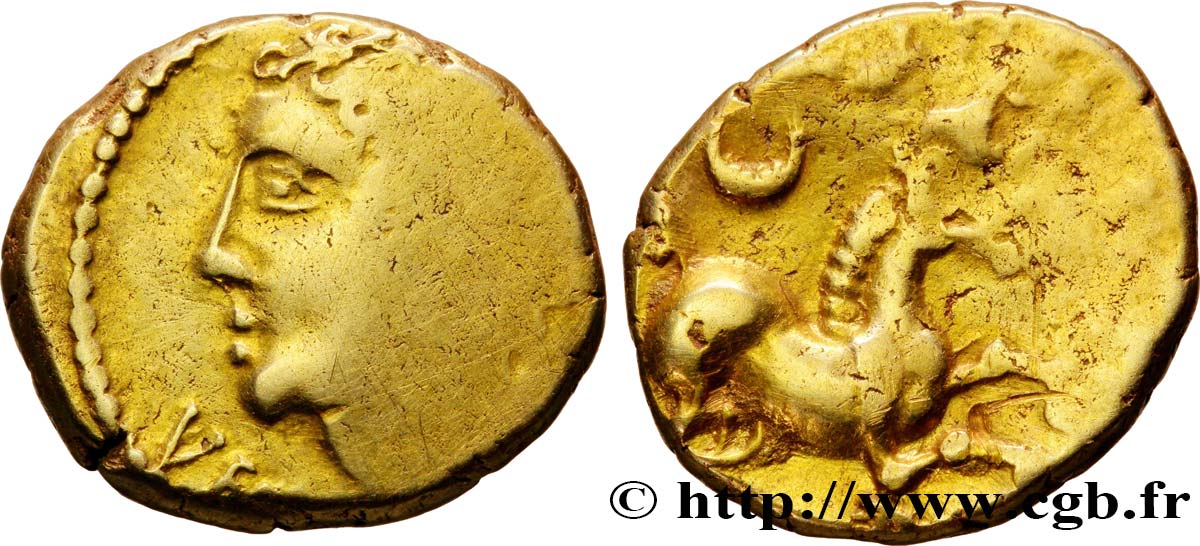
 对产品描述纠错
对产品描述纠错 打印
打印 分享我的选择
分享我的选择 提问
提问 Consign / sell
Consign / sell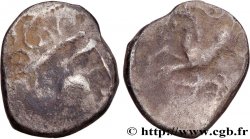
 产品介绍
产品介绍